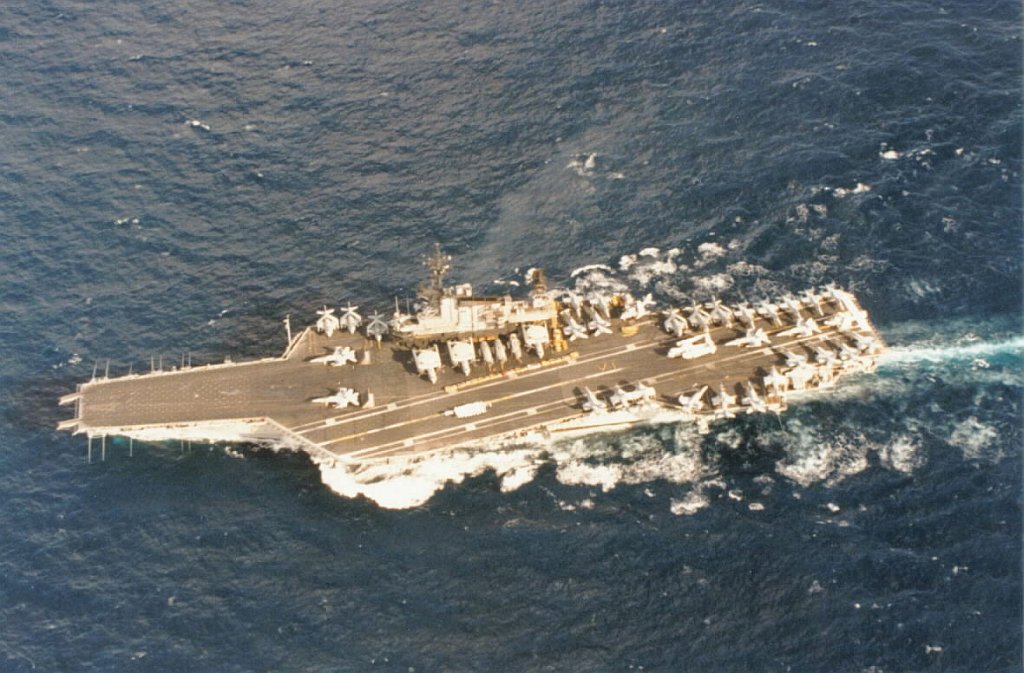

At the same time, the role and utility of these carriers in a direct confrontation with the Soviet Union, which maintained more than 2000 frontline fighters in their air defence forces alone or Power Projection missions in the Third World countries, could never escape intense public and institutional debate even in the US. The open ocean warfighting principle of the US Navys maritime strategy was primarily focused on a powerful and threatening Soviet Union with a world-wide naval capability.

The rationale for a 15-carrier navy during the Reagan era was the perceived offensive operations against the Soviet Union on a global scale envisioned in the US strategy. These carriers had a legitimate role in the execution of the US global strategy during the cold war days. It may not be entirely incidental that today the image of an aircraft carrier is synonymous with that of a nuclear-powered, nuclear capable Nimitz class super carrier with an impressive fleet around it. This paper aims to explode myths and explore facts surrounding sea-borne aviation in a historical framework and attempts a fresh look against the backdrop of the likely Indian security compulsions in the early 21st century. The Indian Navy, too, acquired its first aircraft carrier in 1961 and continues to possess a carrier-based air arm. Many of them considered a sea-based air arm essential for their perceived roles and proceeded to acquire medium-sized aircraft carriers either by building their own or mostly by buying post-war surplus disposed of by the Royal Navy. The post World War II decades also saw the emergence of a few regional navies, mostly schooled in the western traditions. Over a period of time, from the cold war days to post-cold war days, these super carriers have been the American leaders preferred military means of carrying out political objectives across the globe. Since World War II, the US has remained the only country to have built and operated heavy, nuclear-powered aircraft carriers with a complement of nearly 90-100 aircraft on board. The unfinished ship was scrapped after 4 years. The construction was never completed owing to the political turbulence of the early 90s and a paucity of funds. The logical culmination of this Soviet dream was the laying of the 75,000 ton nuclear-powered aircraft carrier in 1988. In the Soviet Union, the initial attempts in building aircraft carriers came to light with the launching of Moskva in the year 1965 though it did not carry any fixed wing aircraft. Others like the UK opted to downsize their holding, primarily due to economic and political compulsions. The end of World War II saw the United States as the only major power left with a carrier fleet to be reckoned with. Then, carriers were entirely oriented towards offensive air power and until a few decades ago, the aircraft complement that could be launched from the deck of a large carrier could outmatch the complete air forces of most countries. Carriers were at the centre of some epic battles fought in World War II. Part of the legend and aura around the aircraft carriers stem from their history. These products of impressive technological achievement are often viewed as the ultimate measure of a nations will and credibility and the status symbol of the superpower, the United States of America. 12)Īircraft Carriers: An Indian IntrospectionĪircraft Carriers made their debut towards the end of World War I and evolved over a period of time as a priceless tool of power projection symbolised by the magnificent Super Carrier Battle Groups of the United States Navy. A Monthly Journal of the IDSA March 2000 (Vol.


 0 kommentar(er)
0 kommentar(er)
